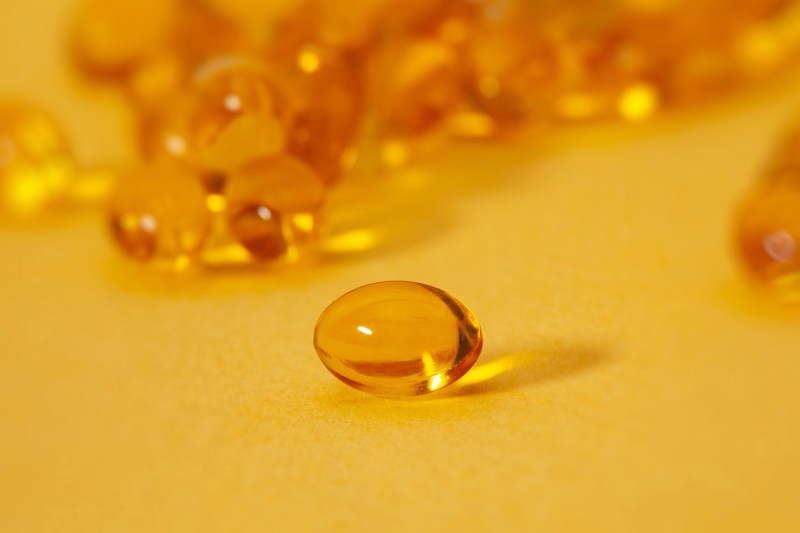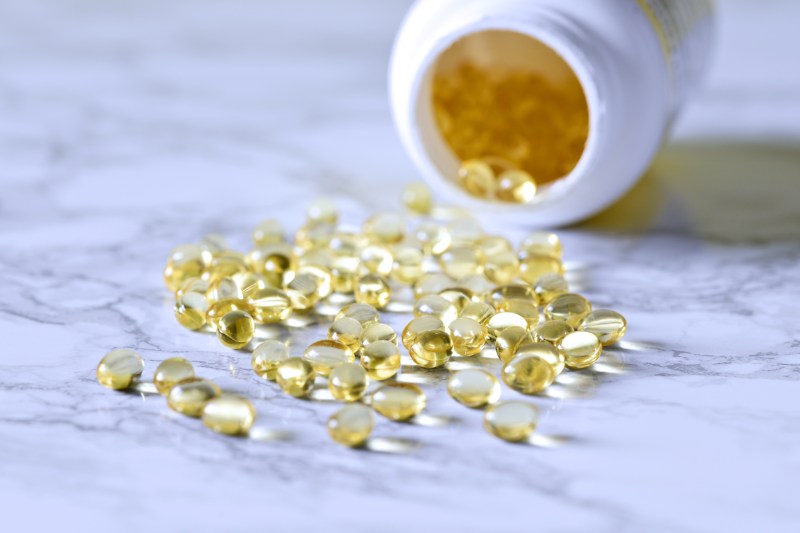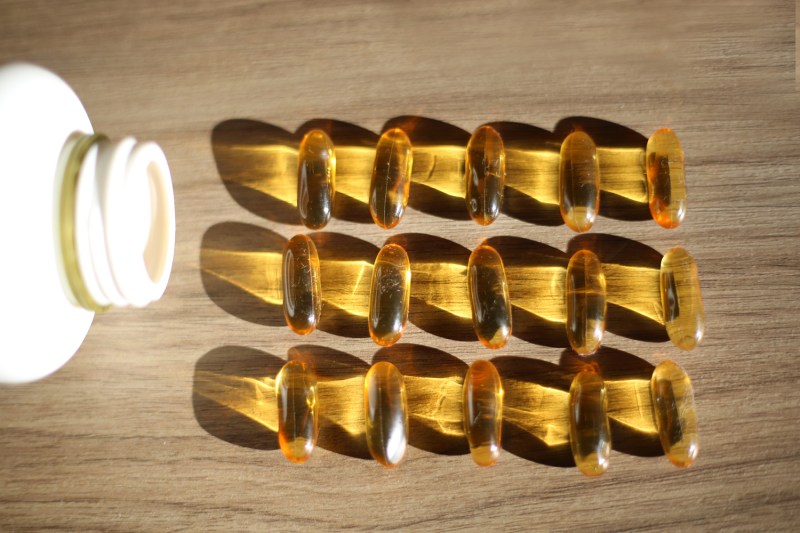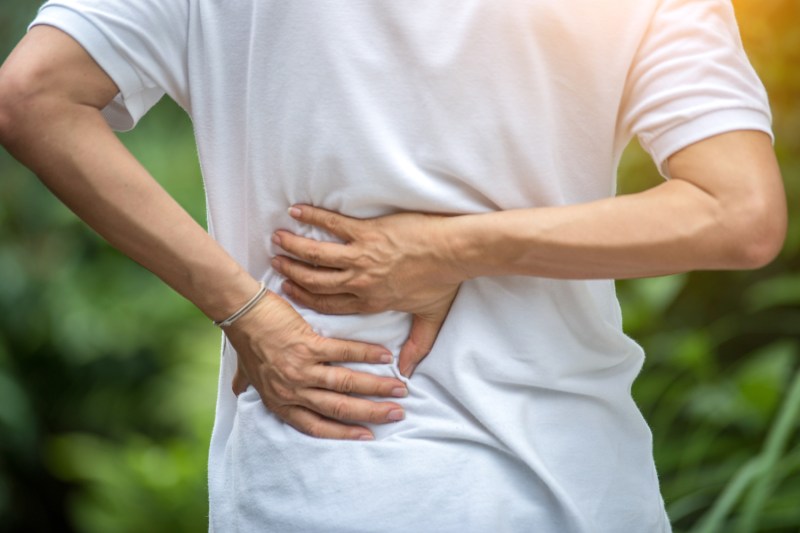
It’s not always easy or feasible to consume a well-balanced and varied diet. Between juggling a busy schedule with minimal time for healthy food preparation, food allergies and intolerances, dietary preferences, and cultural eating habits, many of us fall short of meeting the nutritional recommendations for several key vitamins and minerals. Even if you cook at home and try to eat a healthy diet, you may be deficient in certain micronutrients because some essential vitamins and minerals are only found in a few food sources or are only present in low concentrations.
Vitamin D is a prime example of a vital nutrient that is not found in many common foods in the standard American diet, nor is it necessarily well absorbed when consumed in food sources. Rather, exposure of the skin to sunlight is the primary means by which the body’s vitamin D levels are increased, as exposure to UVB rays stimulates the production of vitamin D.
However, as the hours of daylight dwindle in the winter and the sun becomes less intense, it becomes increasingly difficult to meet your vitamin D needs. Because vitamin D plays several key physiological roles, it may be advisable to take vitamin D supplements. Keep reading for our helpful primer on the functions and benefits of vitamin D, foods high in vitamin D, and whether vitamin D supplementation may be useful.

What is vitamin D?
Along with vitamins A, E, and K, vitamin D is a fat-soluble vitamin, which means it’s stored in the body rather than excreted like vitamins C and B vitamins. However, unlike any other vitamin, vitamin D is actually a steroid hormone produced from cholesterol when skin cells are exposed to UVB rays. In addition to the endogenous production of vitamin D, there are two different dietary forms of the nutrient:
- Vitamin D3, termed cholecalciferol, is found in a few animal foods, such as cod liver oil and egg yolks. This form is absorbed significantly more readily in the body.
- Vitamin D2, termed ergocalciferol, is found in some plants, such as mushrooms. Absorption and conversion to a biologically active form of vitamin D of ergocalciferol is quite poor.

What is the function of vitamin D?
Absorption of vitamin D is far from a simple process; it must undergo two different conversions before it becomes biologically active. The first conversion takes place in the liver, where vitamin D is converted to calcidiol, which serves as the storage form of the nutrient. The second conversion primarily occurs in the kidneys and involves the conversion of calcidiol to calcitriol.
Calcitriol, the active steroid-hormone form of the nutrient, binds to vitamin D receptors, which are present on cells in nearly all areas of the body. Like most steroid hormones, when calcitriol binds to the appropriate receptors, it turns specific genes on or off, inducing various changes in the body.
The most notable function of this active form of vitamin D is increasing the absorption of key minerals, such as calcium and phosphorus, in the gut. Because these minerals are crucial for bone remodeling and repair, deficiencies in vitamin D are associated with an increased risk of osteoporosis and bone fractures. Studies have also demonstrated that vitamin D is also involved in immune function and in promoting skin turnover in wound healing.

Benefits of vitamin D
Vitamin D has been found to have a variety of benefits in the body, including the following:
- Improved bone health and strength
- Faster wound healing
- Reduced risk of cardiovascular disease, cancer, diabetes, and all-cause mortality
- Alleviation of depression and anxiety
- Increased muscular strength

Signs of vitamin D deficiency
Vitamin D deficiency can be clinically confirmed with a lab test, which measures your level of calcifediol, the storage form of vitamin D. In general, adults are considered to have a deficiency if calcifediol is at or below 20 ng/ml, though levels above 20 ng/ml are more ideal. Vitamin D deficiency is quite common, with studies reporting that nearly 42% of Americans have a deficiency in vitamin D.
This prevalence is likely greater in northern regions of the country, particularly in the winter. Moreover, deficiency rates are especially high among blacks (82.1%), Hispanics (62.9%), older adults (41.1%), and non-milk drinkers (48%), as well as those with hypertension (46.3%), low high-density lipoprotein (HDL) cholesterol (49.9%), or obesity (53.8%).
A lab test is generally considered the best preventative measure against possible vitamin D deficiency, as in most cases, deficiencies may present “silently” or go on unnoticed. However, this does not mean that damage is not occurring. Accordingly, if you are concerned that your levels might be low, it’s wise to speak to your physician about getting a lab test.
While vitamin D deficiency is often insidious, there are also several potential manifestations or signs of vitamin D deficiency, including the following:
- Osteoporosis, frequent fractures, or low bone mineral density
- Impaired wound healing
- Depression and/or anxiety
- Obesity or weight gain
- Hair loss
- Frequent infections, particularly colds, flues, and respiratory infections
- Fatigue
- Bone or muscle pain
- Rickets (in extreme cases)

Dietary sources of vitamin D
There are few foods that naturally contain appreciable amounts of vitamin D. Therefore, most milk and milk alternatives, as well as some orange juice and breakfast cereals, are fortified with vitamin D3. While the foods listed below do contain vitamin D3, most experts agree that they would need to be consumed daily to fully meet your vitamin D needs.
- Cod liver oil (far and away the richest dietary source)
- Trout
- Salmon
- Sardines
- Mackerel
- Swordfish
- Egg yolks
- Tuna
- Beef liver
- Cheese
Mushrooms also contain vitamin D2, though research indicates this form is poorly utilized in the body as much as it fails to be converted to the active form.

Should you take a vitamin D supplement?
The only surefire way to know if you need a vitamin D supplement is to get your levels checked. That said, if you’re a vegan or vegetarian or rarely consume fatty fish or milk, it’s quite possible that your levels may be low. Additionally, if you don’t get much direct sunlight, wear sunscreen, have a history of fractures, or have darker skin, it’s also a good idea to look into intake and levels of vitamin D.
Light therapy, which involves daily exposure to artificial bright white light (10,000 lux), may also be a viable alternative or adjust to supplements for some, depending on the severity of your deficiency, sunlight exposure, and nutrient needs.
Recommendations for choosing and taking vitamin D supplements
- Choose vitamin D supplements that are third-party tested and verified for purity, quality, and potency.
- Consider the form of the supplements (tablets, capsules, etc.) and choose one that you’re comfortable taking.
- Read the label carefully and understand the dosage, ingredients, and potential risks associated with the supplement.
- Talk to your healthcare provider about potential interactions with any medications you’re taking and any underlying health conditions you may have.
- Be aware that supplements are not a substitute for a healthy diet with vitamin D and should be used to complement, not replace, a balanced diet.
Editors' Recommendations
- Black tea vs. green tea: Which offers more benefits?
- These are the healthiest vegetables you need to start eating now
- Improve your skin and eyes with these delicious foods high in vitamin A
- You should know how to make these incredible sauces
- Cruciferous vegetables are the secret to a healthy diet — here are 9 you should be eating




